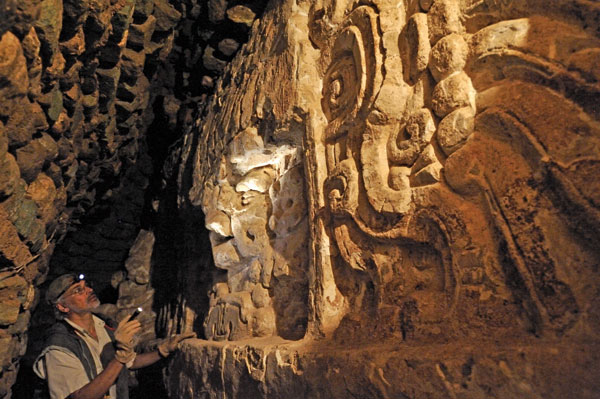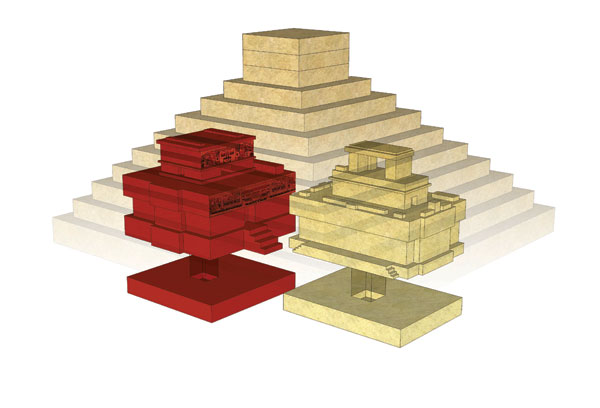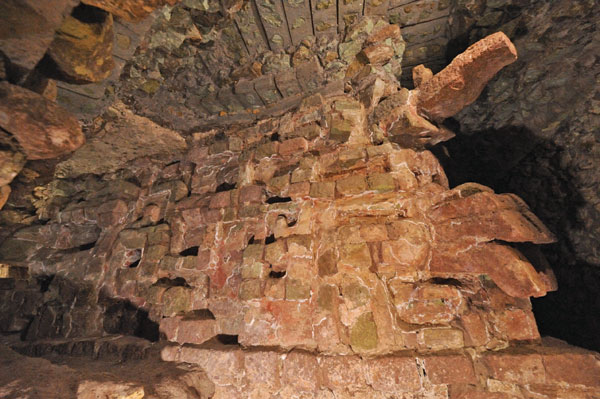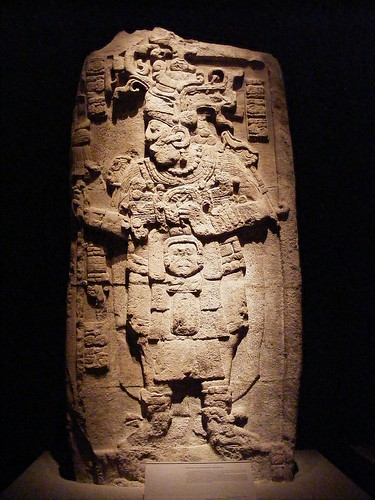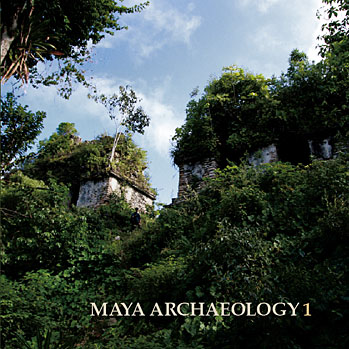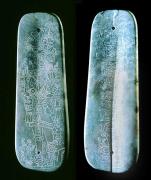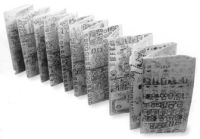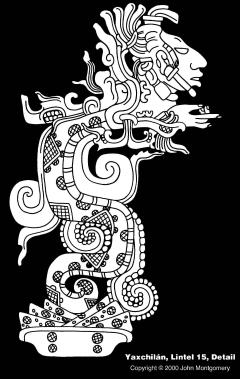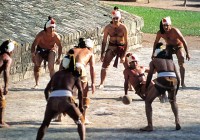
Maya News Updates 2010, No. 28: Yaxchilan, Chiapas - Strong Indications for Local Elite Economic Specialization in Mollusk Shell Handicraft Production
On Monday September 6, 2010, the online edition of El Informador posted a short report on recent research on economic activity at the archaeological site of Yaxchilan, Chiapas, Mexico. A study by Adrián Velázquez Castro, Belem Zúñiga Arellano, and Norma Valentín Maldonado of the Instituto Nacional de Antropología e Historia (INAH) of small mollusk shells found at the Small Acropolis possibly indcates that the local elite was responsible for craft production of shell ornaments. The study was also the subject of an online posting at Art Daily on Thursday, September 9, 2010. Below follows the Spanish report (El Informador), followed by the English report (Art Daily). Normally I report faster on these interesting results of new research, but for more than a week the INAH site will not open (and time to search other online sources only emerged today ...)(edited by MNU):
Sugieren que elite maya de Yaxchilán producía artesanía exclusiva - Especialistas del INAH sugirieron la posibilidad de que en los palacios mayas se llevaran a cabo actividades artesanales especializadas, aparentemente por miembros de las elites y no por grupos de bajo rango o foráneos como solía acostumbrarse.
Lo anterior deriva de un estudio realizado a 76 elementos de conchas de moluscos hallados en la Pequeña Acrópolis de la Zona Arqueológica de Yaxchilán, en Chiapas, por parte de los investigadores Adrián Velázquez Castro, Belem Zúñiga Arellano y Norma Valentín Maldonado, del Instituto Nacional de Antropología e Historia (INAH).
Velázquez, adscrito al Museo del Templo Mayor, expuso que el objetivo de dicho trabajo es aportar, desde la base del estudio del material conquiliológico (de las conchas de los moluscos), un soporte para la definición de las actividades desarrolladas al interior de las cortes, en este caso mayas.
"Es probable que muchos de los elementos producidos en la Pequeña Acrópolis de Yaxchilán, se encuentren en el resto del sitio, en contextos funerarios de la nobleza. Si realmente esta parte de la ciudad fue un centro productor de estos bienes, a cargo de una elite secundaria, es probable que muchos de ellos fueran a dar a otros contextos, quizá de los linajes mayas", comentó.
Yaxchilán se ubica sobre un amplio meandro, en la margen izquierda del Usumacinta, y al parecer se configuró al seguir el mismo trayecto descrito por el río, alcanzando su auge entre 550 y 900 d.C.
La Pequeña Acrópolis, apuntó el investigador, ocupa la cima de un afloramiento rocoso que se acondicionó mediante un sistema de terrazas y una gran plataforma en la parte superior, para albergar 16 edificios que se organizaron en función de tres espacios abiertos: una terraza que se extiende al frente, un amplio patio central situado en la posición más elevada y un pequeño patio secundario abierto al oeste.
Se cree que se trazó con miras a mantenerla relativamente aislada de las áreas públicas, lo cual explica que su acceso principal se abra hacia el río. Por otra parte, Vázquez destacó que si bien la colección analizada de conchas de moluscos es poco cuantiosa, es rica en su variedad, toda vez que proceden tanto de la Provincia Panámica o Pacífica (bahía de Baja California, México, hasta Cabo Blanco, Perú), que de la región Caribeña.
Inclusive hay especies como 'Spondylus princeps' y 'Spondylus calcifer', que debieron obtenerse mediante buceo, pues se hallan a profundidades que alcanzan hasta los 30 metros.
"La selección de materiales demuestra que la intención era conservar la ornamentación y las coloraciones características de los moluscos, por ejemplo, el tono violáceo del Spondylus calcifer", señaló el especialista del INAH.
De todo el acervo, compuesto por 76 elementos de conchas de moluscos, acotó, se analizaron las huellas de manufactura para determinar el tipo de herramientas y procesos que se utilizaron en cada caso, ello mediante microscopía electrónica de barrido que sirve para el análisis de las marcas superficiales de los materiales. "Se encontró una gran homogeneidad tecnológica en la colección que se estudió. Las herramientas identificadas a través del análisis de las huellas de manufactura corresponden a las que se han hallado en el sitio arqueológico: artefactos de materiales locales, como metate y manos de arenisca, así como pulidores de pedernal. Sólo encontramos dos piezas con la huella de perforadores de pedernal."
"En el sitio también han aparecido materias primas foráneas como la obsidiana, de la que se reporta gran cantidad de artefactos, particularmente en la Pequeña Acrópolis, concluyó. (Source El Informador)
Study Reveals that Elite of Yaxchilan Produced Exclusive Handcrafts - Analyses conducted to objects made out of mollusk shells found at the Little Acropolis of Yaxchilan, in Chiapas, reveal the possibility of specialized handcraft workshops at the interior of maya palaces. Apparently, members of the elite created the crafts and not members of the lower classes or foreigners as it was the custom.
Researchers Adrian Velazquez Castro, Belem Zuñiga Arellano and Norma Valentin Maldonado, from the National Institute of Anthropology and History (INAH) conduct the study of a 76-elements collection of mollusk-shell objects recovered by archaeologist Daniel Juarez at the palace area of Yaxchilan.
According to Doctor Adrian Velazquez, who works at Templo Mayor Museum, the aim of the work is to contribute, based on the study of shell material, to help defining activities developed at the interior of the maya courts.
“It is probable that many elements produced at the Little Acropolis of Yaxchilan can be found in the rest of the site, in nobility funerary contexts. If this part of the city was really a production center in charge of the secondary elite, it is probable that many of the produced items were used in other maya palaces”.
Yaxchilan is located in a wide meander at the left bank of Usumacinta River; apparently the city was formed following the trajectory of the river, having its peak between 550 and 900 AD. Little Acropolis was drafted to be kept isolated from public areas, its main access opening to the river.
The Little Acropolis lies on the top of a rock hill adapted with the terrace system and a great platform to lodge 16 buildings organized around 3 open spaces: a terrace at the front, a wide central patio at the most elevated position and a small patio open to the west.
Velazquez explained that the mollusk-shell collection is rich in its variety, since they proceed from the Pacific coast (from Baja California Bay, Mexico, to Cabo Blanco, Peru), as well as the Caribbean region.
The collection includes samples from Spondylus princeps and Spondylus calcifer that must have been collected by divers, since they are found in depths of up to 30 meters. “The selection of material shows that the intention was to conserve characteristic ornamentation and color of the mollusks, such as the violet tone of Spondylus calcifer”, mentioned the INAH specialist.
Shells include local bivalves from Usumacinta River as well as regional snails, and were used to create utilitarian and ornamental artifacts, such as small trumpets, beads, earrings, pectorals, ear spools, rings, as well as circular and squared inlays, as the one of the glyph-emblem of Yaxchilan. The use given to some of the items has not been determined yet.
The shell artifacts have been analyzed to determine the kind of tools and processes used to create them, employing electronic microscopes to search for superficial marks. “A great technological homogeneity was found in the studied collection. Tools used to manufacture the shell material were identified thanks to the marks, and correspond to those found at the archaeological site: artifacts made out of local materials such as sandstone mills and lint polishers; only 2 pieces had marks of lint drills”.
“Foreign raw material was found too, such as obsidian, mainly at the Little Acropolis. Igneous rocks such as basalt and andesite were located, so it is not unusual that volcanic ashes were used as drilling abrasive, since material was brought from volcanic zones”, concluded Velazquez Castro. (Source Art Daily)







